How To Approach Technology For A New Commercial Construction Project Or Remodel
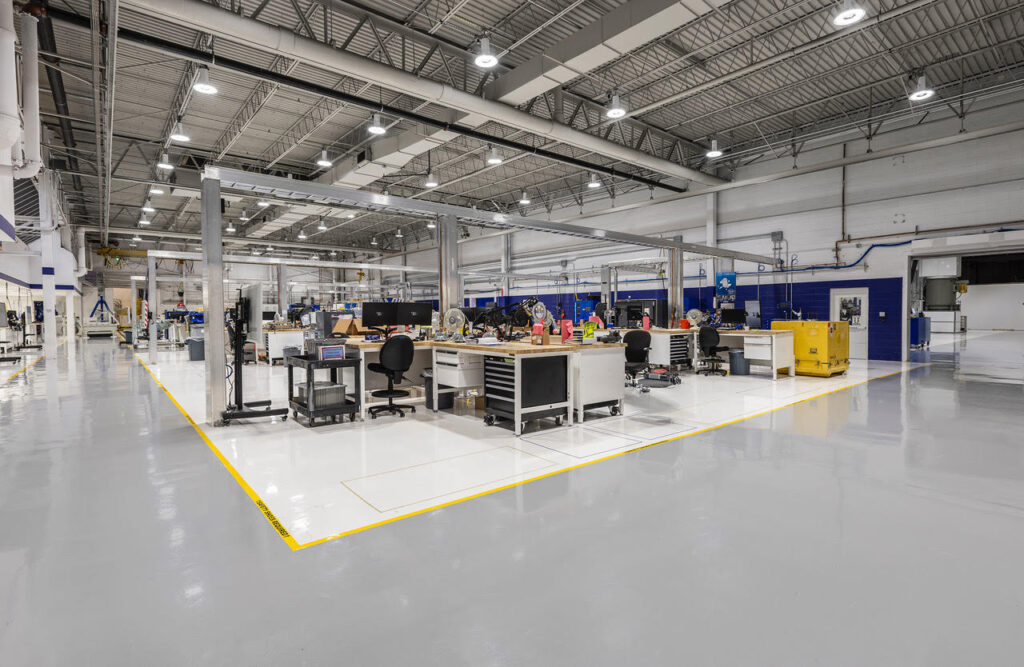 Airbus, a global Fortune 500 company in the Aerospace & Defense industry, awarded Scott + Reid a contract to expand its helicopter Dynamic Component Repair Shop based in Grand Prairie, TX which enables Airbus to increase its throughput capacity. This project modernized maintenance equipment and tools, and facilitated new technologies and digitalization initiatives to better respond to the needs of its customers and reduce their turnaround time.
Airbus, a global Fortune 500 company in the Aerospace & Defense industry, awarded Scott + Reid a contract to expand its helicopter Dynamic Component Repair Shop based in Grand Prairie, TX which enables Airbus to increase its throughput capacity. This project modernized maintenance equipment and tools, and facilitated new technologies and digitalization initiatives to better respond to the needs of its customers and reduce their turnaround time.
When technology advances at a speed which can be seemingly impossible to plan for, what are the best ways for a team to begin to approach technology when it comes to new commercial construction projects or a remodel? How can they ensure the technological needs of today are met – while establishing a strong foundation to scale those requirements as-needed?
At Scott + Reid, we’ve found it important to plan for the current and potential future technology needs of a business from the very beginning of a project.
Scott + Reid’s Project Manager, Kelly McDowell, is an expert in the technology field who aims to consistently match the technology needs of today while projecting for those of tomorrow. Kelly has an associate’s degree in electrical engineering and a Bachelor of Science Degree in Construction Management. With years of experience in electrical engineering, Kelly is able to apply his wealth of knowledge and experience to work with clients of all sizes on a technology construction plan that supports short and long term needs.
We’ve asked Kelly a few questions about his process when it comes to technology and construction projects – from beginning to end.
- How has your former experience as an electrician informed and directed your role in managing projects?
Kelly: As an electrician, you are the first on the job and the last to leave. You experience every aspect and installation phase of a project. This provides a different insight as to what it takes to complete the entirety of every scope. Although you might not know all trade-specific installations, you are a part of every coordination process. This allows for an overall vision and understanding of the complete construction process.
- When it comes to remodeling, what are some of the current ways clients are looking to upgrade their technology and electrical needs?
Kelly: At Scott + Reid, I’m seeing a variety of innovative integrations. We’re assisting our clients in upgrading technology through ergonomic and interactive furniture, productivity apps and software, voice activated assistants, smart whiteboards with digital drawing capabilities, 3D interactive working desks, smart windows, green technology initiatives, and smart storage solutions. It’s truly amazing to see how these services can impact business productivity.
- What trends are you currently seeing in office and commercial technology in 2024? Any predictions for the future?
Kelly: On top of AI and its growing impact on construction technology, there’s significant technological growth in the following areas:
Sustainability and Green Building: Sustainability is becoming a cornerstone of technology in construction, with new and existing companies adopting eco-friendly practices, using green building materials, and integrating energy-efficient technologies (with the data to back it up).
Advanced Building Materials: The industry is embracing innovative materials and means that enhance durability, energy efficiency, and safety. Technology provides us with an understanding in regards to how building materials affect these areas.
Connected Construction Sites: Improving technological connectivity between construction sites enables real-time data sharing, enhancing project management and efficiency.
Building Information Modeling (BIM): BIM continues to revolutionize design, construction, and maintenance by creating digital representations of buildings and infrastructure. This impacts project planning as well.
Safety Measures: Enhanced safety protocols prioritize worker well-being and minimize accidents. Technology has helped us in regards to construction education, site-monitoring, and more.
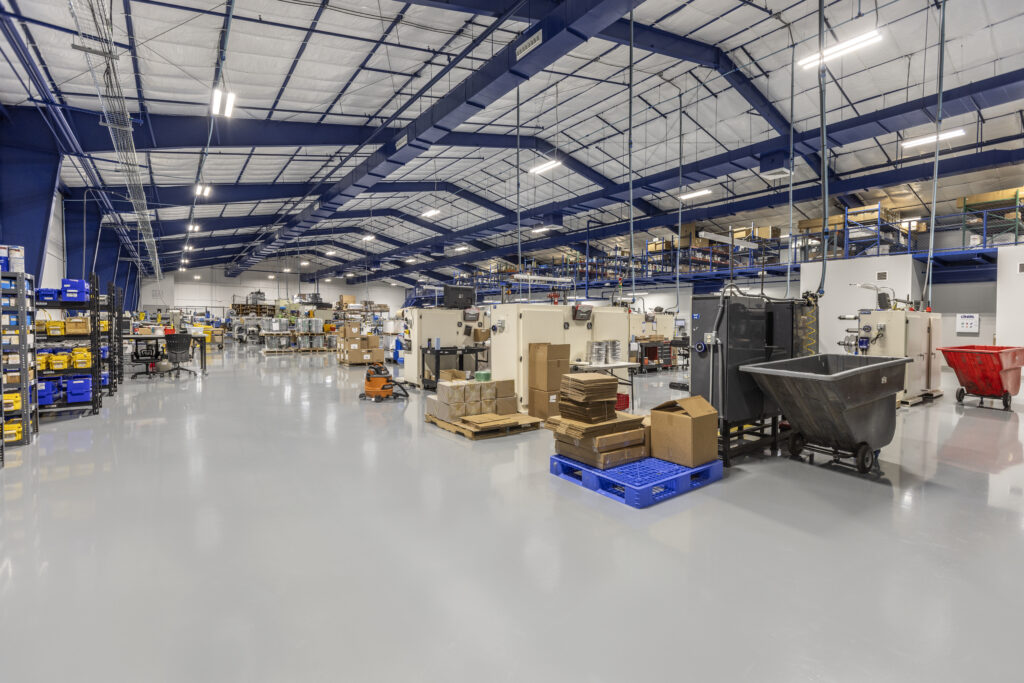
MARIAN: Since 1954, Marian has utilized creative and innovative technology to manufacture quality flexible components to enhance their customers’ products at competitive prices with exceptional service – serving companies all over the world.
- How do you begin discussing the technology needs with a client? What aspects matter the most and how does it or can it affect construction?
Kelly: The first thing that I consider is what type of business that the client operates. The business type is going to give me an idea of the technological needs of the client. But rather than assume any specifics, I request their current technological expectations and then communicate any additional implementations or ideas that could help facilitate growth and future savings. Communication is the biggest factor, and without proper planning and decisions, the project could accrue additional costs later.
One element that’s crucial to the success of technology planning in construction is building technological infrastructure into the walls of the project (from the beginning) that will support short and potential long term needs. Building a strong technological foundation from the start – can help prevent extra costs later on.
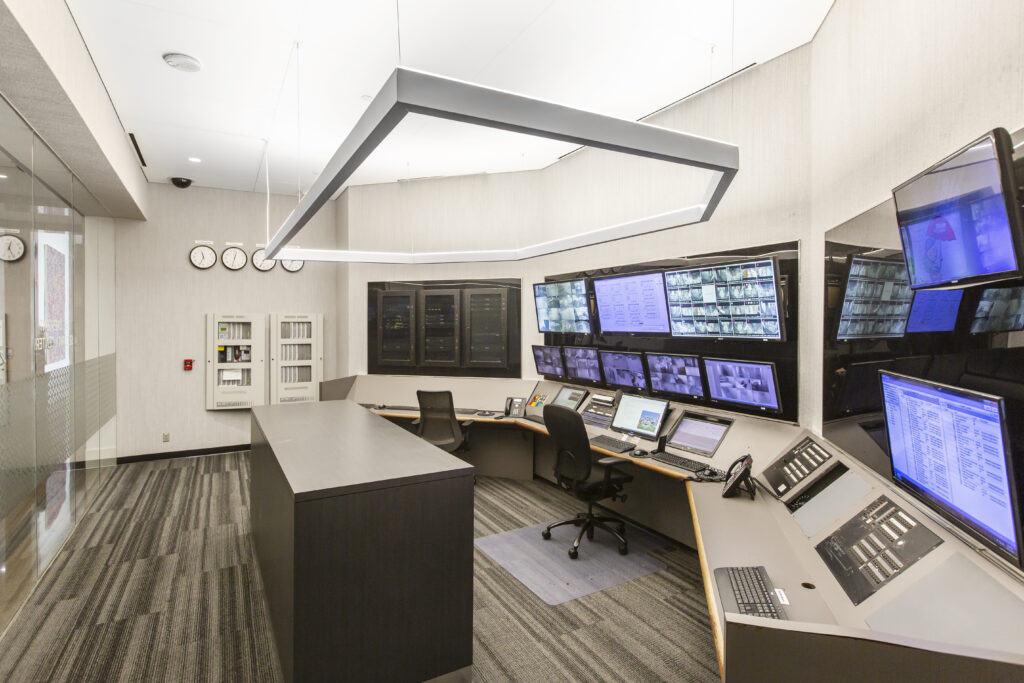 THE CRESCENT: The Crescent is a unique 1.3 million-square-foot luxury landmark mixed-use development in Uptown Dallas. Scott + Reid was honored to support bringing a state-of-the-art security office together for this high-end property.
THE CRESCENT: The Crescent is a unique 1.3 million-square-foot luxury landmark mixed-use development in Uptown Dallas. Scott + Reid was honored to support bringing a state-of-the-art security office together for this high-end property.
- What are the biggest challenges when it comes to planning for technology in a project?
Kelly: During the design and construction phase, there will be a few challenges when it comes to planning for technology in a project. One key challenge pertains to the successful understanding of what aspects of the project are most important to the client. Is it the duration of the project? Monetary limitations? Or, simply having the newest and best technology that’s available?
If being prepared for technological changes over the years is important, then having the backbone (unseen infrastructure) in place is absolutely vital to ensuring the client is able to potentially integrate additional technology into the space over the years.
Clear communication is also a challenge. I often act as the conduit between architects, engineers, electricians, and other professionals to assess the specific needs of the client and what that looks like for the construction project.
Additional challenges include: communication, transparency, lack of methodology, and organization. Starting with a comprehensive plan can alleviate a lot of unnecessary headaches. Having the initial insights to prepare for technology changes can help eliminate scope creep and mid-project adjustments – which subsequently can trim cost and time.
- How has the emergence of technology and AI impacted the construction industry?
Kelly: Innovations in artificial intelligence are starting to reshape and affect the construction industry in key areas such as: offering solutions for enhanced safety, efficiency, and operational accuracy.
These areas are important factors in construction and can have major impacts on the duration of a project and construction means and methods. With a steady stream of new AI patents, abilities, and growing job opportunities, AI will assuredly create a major impact on the construction industry and pave the way for transformative advancements in construction practices.
Planning for future transformative technologies in AI, means creating solid technological infrastructures to support potential growth and abilities.
- With the increasing use of storage and data, power is becoming increasingly important. When it comes to consumption, how does one begin when it comes to understanding current technological needs while planning for the future?
Kelly: Most of the new technology is powered by low voltage (DC / or Direct Current) applications. However, it is the servers that provide that backbone for the low volt systems and they require AC (Alternating Current) voltage. The typical server requires either a 120v or 208v dedicated circuit/s which usually pull around 600 watts of power under standard operation.
High-end servers that run intensive high-performance computing (HPC) tasks, could draw a few thousand watts of power each. Therefore, understanding your current server requirements along with potential future adjustments (or projections) will be key in determining your current and wisely estimating your future consumption.
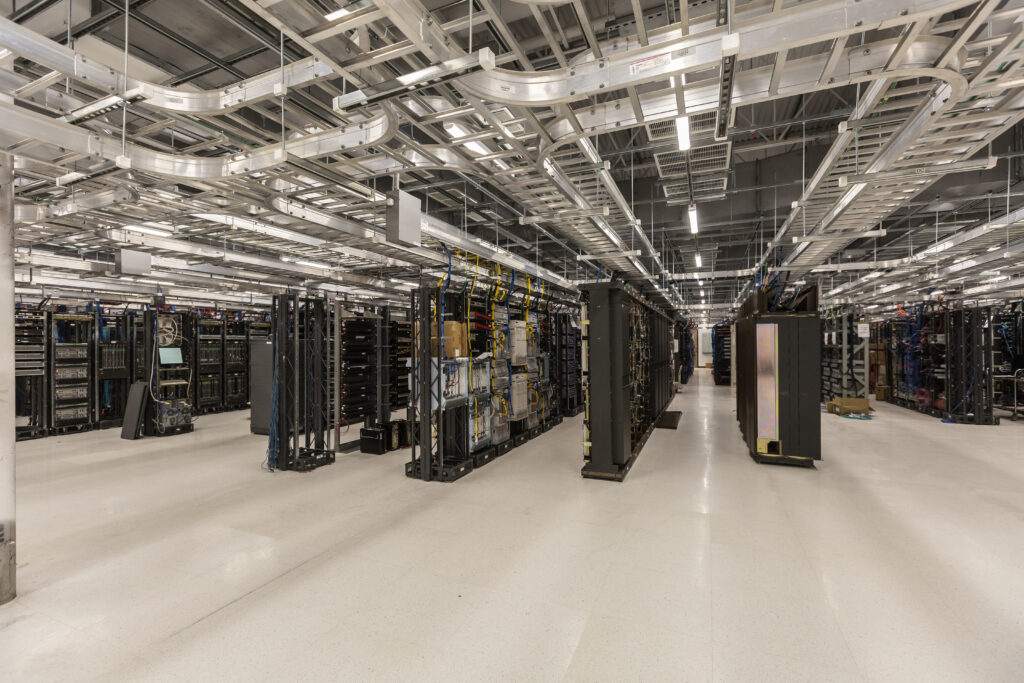 RIBBON COMMUNICATIONS: Looking to consolidate multiple Dallas-area locations into one space, Ribbon Communications, a global leader in providing software solutions that secure and power leading service providers and enterprise communication entities, leased 107,000 square feet at the Legacy Central Campus in Plano, Texas and contracted Scott + Reid for the build-out of their high-tech office space and R&D lab. This new space had a vast amount of power requirements – with more projected for the future.
RIBBON COMMUNICATIONS: Looking to consolidate multiple Dallas-area locations into one space, Ribbon Communications, a global leader in providing software solutions that secure and power leading service providers and enterprise communication entities, leased 107,000 square feet at the Legacy Central Campus in Plano, Texas and contracted Scott + Reid for the build-out of their high-tech office space and R&D lab. This new space had a vast amount of power requirements – with more projected for the future.
- What are some of the most common mistakes you see when it comes to the integration of technology and electrical in new construction and redesigns?
Kelly: The most common mistake I have experienced in integrating technology is the lack of planning for the future. During construction, it is vital to have everything in place before the process begins. When clients need to work-in new technology or adjust their needs after construction has begun, it can create delays on the project timeline – which in turn, costs more money.
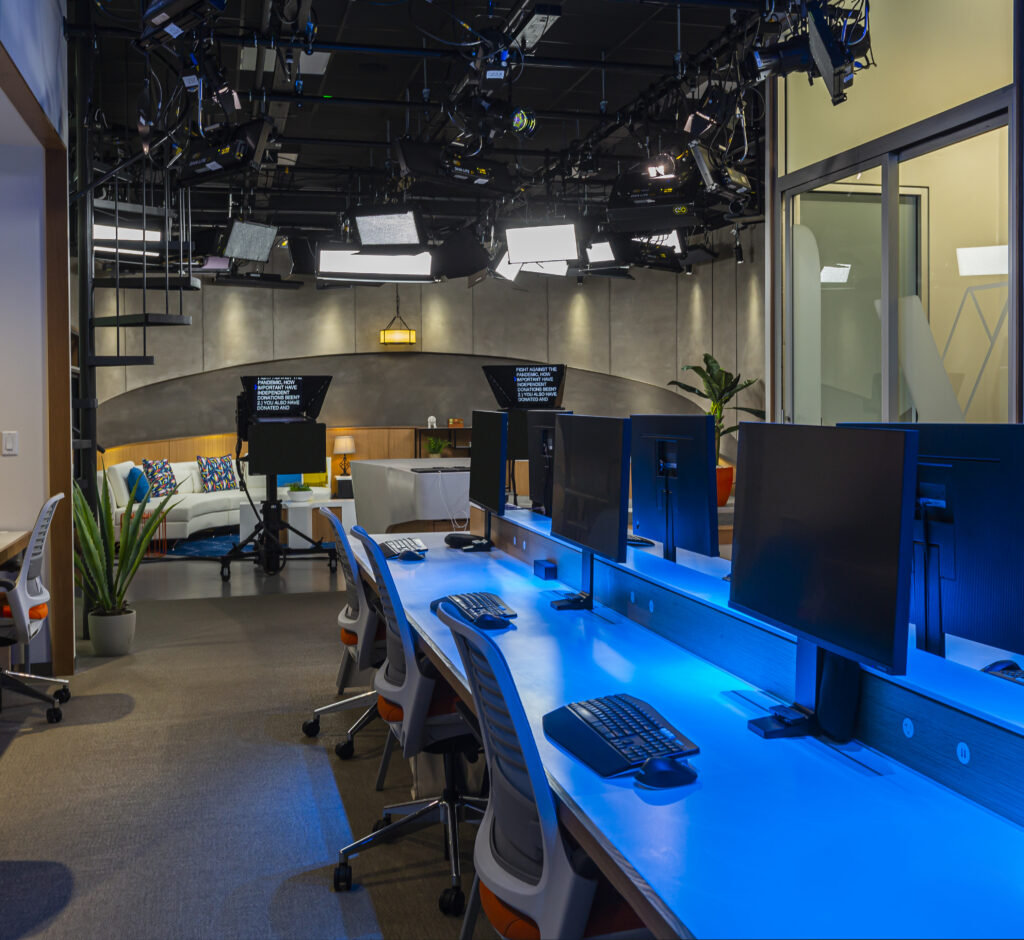 NBC STUDIOS: Our NBC Studios project in Fort Worth included broadcast studios & control rooms with integrated data, power and computer monitor mounts. The studio & VR area included installation of Studio Pipe grid system for support of studio lighting and overhead broadcast devices.
NBC STUDIOS: Our NBC Studios project in Fort Worth included broadcast studios & control rooms with integrated data, power and computer monitor mounts. The studio & VR area included installation of Studio Pipe grid system for support of studio lighting and overhead broadcast devices.
- How has hybrid work influenced technology integration on projects?
Kelly: It is integral that all companies that are building out new spaces include and adapt the necessary tools that enable remote work to be successful. This might sound contradictory when a company has plans to build a new work environment, but it is important to potentially accommodate varying work styles to prepare for the unknown needs of the future.
And, with the increasing popularity of hybrid work as well as those companies who have brought employees back full time, varying technological needs need to be considered when designing work spaces. This may include the technological integration of remote employees to video conferences or increasing the general technological capabilities for all employees who may still be working with other partners or collaborators digitally.
This calls for working with the client to understand what the bare minimum technological requirements are versus extras – from the very beginning of the project.
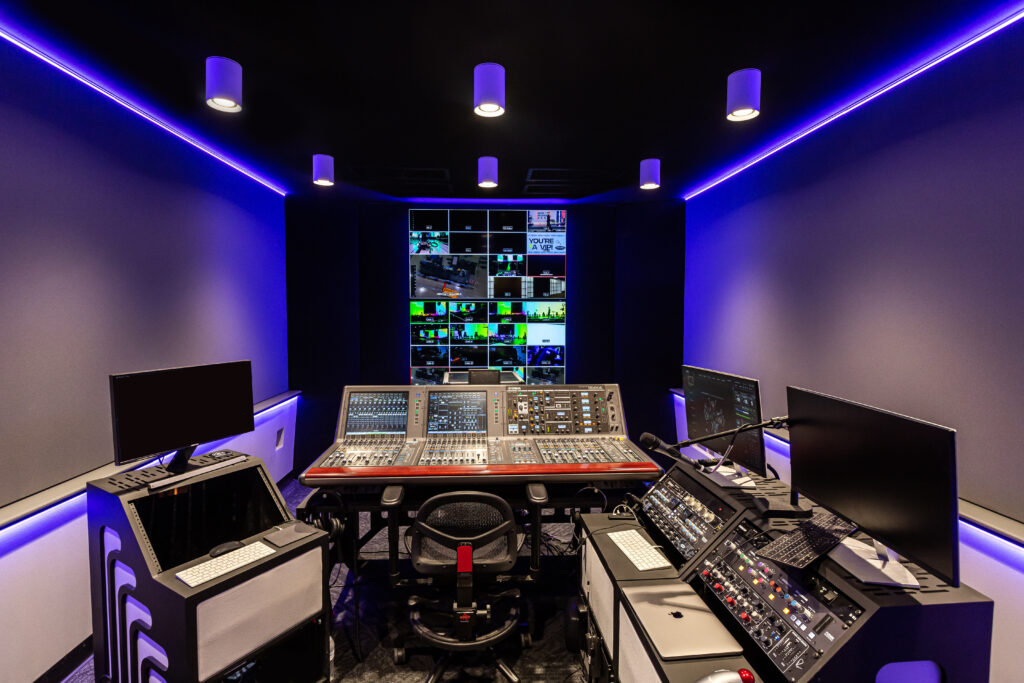
TRANSFORMATION CHURCH: Looking to establish deep roots in the Tulsa, Oklahoma community, Transformation Church purchased a 167,000-square-foot event center to convert into their new sanctuary complete with a 16-million-dollar tech package. The broadcasting and recording studios are intricate in design, with custom sound and acoustical systems that require their own generator. The 200-pound doors and fabric wall coverings sustain a perfect STC rating. The nearby server room is equipped with generators and cooling CRAC units.
________
It was a pleasure to speak with Kelly about the growing technological needs of our clients when it comes to new construction and remodeling projects. As we’ve worked on both planning for and implementing a wide variety of technological solutions and capabilities, we are ready to assist our clients with their current and future technology needs as well as recommending some of our incredible partners to assist with planning for technological growth and integration as-needed.